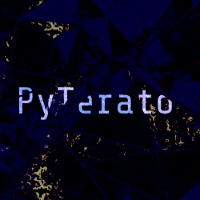Leaderboard
Popular Content
Showing content with the highest reputation on 02/26/2023 in all areas
-

How many stories would you post at the same time?
Deadman and one other reacted to Desiderius Price for a topic
Aw...a formal label for what I’ve been writing. I generally treat it like a camera that can snoop on the focus character, for a scene, a chapter, etc, but allows for the occasional “stray”. TBH, for getting into the main’s mind, it’s an excellent tool w/o the distraction of what the others are thinking (well, except my Harry and Ron have been studying up the Legilemency, so they’re a bit more perceptive.)2 points -
How many stories would you post at the same time?
Deadman and one other reacted to Wilde_Guess for a topic
For what my opinion is worth, each POV for a story has its place, its advantages, and its disadvantages. Third person perfect allows the author to tell the reader their entire tale, including any internal thoughts for any character the author believes relevant. However, this POV can make it more difficult for the reader to connect with the author’s intended protagonist. And, sometimes, having the reader know more about what’s going on in the story than any of the participants can make it more difficult for the reader to connect with any of the characters, or even the story as a whole. Third person imperfect POV forces the reader to connect to the story via the “lead” character, or at least the “focus” character where the “lead” changes, a la George RR Martin’s famous series. This also restricts the reader’s view to that of the lead character. Many people when writing about Harry Potter often mention or even complain about the “Harry Filter.” And Rowling did break from the Harry Filter to third-person perfect POV at a few key places through the seven books. First person POV portrays the story through the experiences of the lead character literally first-hand. This gives you both the lead character’s insights and myopias. In some cases, you can switch first-person POV from one character to another—however, this is not common, and needs to be explained within the confines of the story itself. And, just like third person imperfect, the reader’s view of your tale is restricted to the experiences and observations of the lead character. First person POV is quite literally being given ‘permission’ to read the diary or journal of the protagonist. You seldom read the diaries of say two siblings side by side for any length of time, and the likelihood of believeability tends to drop with each POV change. But, there are exceptions. If one of the secondary main characters tells an extended yet needful tale to the protagonist within the first-person POV story, you can just change the POV to simplify things. Or, if the reactions of others to the tale is needful, you can “fight the army of uncooperative quotation marks” in order to capture the reactions of others hearing that story. Mickey Spillane in his Mike Hammer series, and Rex Stout in his Nero Wolfe series both used first-person POV. And, both authors still have a loyal following even today, many decades after their demise. However, third person perfect and third person imperfect are more commonly found. Steven King has used both first person and third person imperfect. I’m pretty sure he’s also used third person perfect, but I can’t cite examples right this second, so I’ll say “probably.” When mentioning tense differences between a prose story and any form of a play, you need to remember that a [*]play is not just a story. That play is also the instruction set for the director, actors, and other technical personnel performing that play, whether on a theater stage for a live audience or on a soundstage for cameras [and studio audience if you work at Desilu or are being produced by Norman Lear.] Outside of dialog, those are always present tense, because the director needs the lights changed right f??king now, not when it’s convenient. In a prose story, however, it’s assumed that you quite literally had time to actually write a book about what happened, so the activity portrayed has definitely finished happening.2 points -
How many stories would you post at the same time?
BronxWench reacted to Wilde_Guess for a topic
Hi, Deadman and all. Your POV change “works,” but poorly. You can change the “first person POV” in just about any way except for that without looking like a “total beginner.” Changing the first person POV in your first person POV, like inserting a “flashback,” should never use the actual words [or acronyms for you pedants] “POV” or “flashback.” ““I can’t believe she did that!” I thought to myself as Buffy put two fingers up my womanhood without warning while everyone in history class watched. “She later admitted to Oz, “I didn’t know what I was thinking Even while I was so angry with Faith then, I had run completely out of words to express my love for her. So I went straight to fingers. Her femininity was gushing even before my cuticles made it in...”” The above will work much better than flagging a POV change in the middle of a chapter using POV Flags, with just a little more polishing. Likewise, the one cue you don’t use when switching to a flashback is the word “flashback,” unless the protagonist is remembering a flashback they had some time previous to the “current time” of the main narrative. “Buffy thought back to six years ago. She was only twelve then, lost her anal virginity doggy-style to Oz’s ‘eleven,’ and felt like number ten...” or “Oz thought back to that time little more than six years ago, and his first orgasm-induced flashback he had while “making Buffy into a woman...”” both work much better in the flow of the narrative than “Flashback!! Buffy was bent over the doghouse...” Coming up with a great story idea is the first thing you need to do, and without that all the mechanics in the world are meaningless. So far, you’ve done that. Now, with the good story in your mind and at your fingertips is where the mechanics start to mean something. Thanks.1 point -
How many stories would you post at the same time?
Wilde_Guess reacted to Deadman for a topic
Yeah, based on the way you’re laying it out, I’ve often written in First POV and occasionally Third Person Imperfect. The way I’ve gotten through the issue of showing different POVs in First POV is that I declare who the character is at the beginning. For instance: Chapter 1: Faith’s POV I can’t believe she did that. Chapter 2: Buffy’s POV I’m so angry with her right now. And so on. Where I run into problems in Third POV is when I’m writing a story, and say one character is touching the other’s face, part of me wants to shift between POVs. But usually it makes things longer so I choose one. A particular character touches the other’s face, and I get into the way they’re feeling the person they’re touching. But then I have to spend time with what they are doing next, and go through it. Then I shift when I feel like the story needs to know what the other character is feeling. It doesn’t feel as natural so say “Both of their bodies tingle at the feeling of Buffy touching Faith’s face.” At least for me anyway.1 point -

Crossroadsmk2 Updates
Wilde_Guess reacted to MorbidFantasy for a topic
That’s what she said… I’ll see myself out.1 point -

AFF Halloween 2022
GeorgeGlass reacted to BronxWench for a topic
Thank you so much! I visited the Cave of the Winds in Colorado Springs in early October, and we did the Lantern Tour. At one point during the tour, we all extinguished our lanterns and spent a few minutes in absolute cave dark. I have to admit, it was both eerie and wonderful, but really, the mind does play some fascinating tricks when you can’t see anything at all. Then I bought a novella, entitled “Pulling the Wings Off Angels” by K.J. Parker. I refused to read it until after I wrote my story, but the title alone was enough to send my thoughts back to the days when I argued theology with Jesuits for shiggles, including some heated (and boozy) discussions about the nature of angels. And there we are. My mind is a terrible place sometimes. Oh, and I highly recommend the novella, which I finally read.1 point -

How many stories would you post at the same time?
Deadman reacted to Desiderius Price for a topic
Weird, I find the flip is an issue… easier to keep it straight for me and the reader to keep it third POV, avoids switching around who “I” means.1 point -
With the Mirror Came...
Wilde_Guess reacted to Thundercloud for a topic
Chapter 11 has now been posted. We finally get to the masquerade party that Ronja has been dreading and it gets harder and harder to keep the secrets about the sexual depravity hidden. If you review it the likelihood I review some of your story increases a lot...1 point -
How many stories would you post at the same time?
Desiderius Price reacted to Deadman for a topic
Well the way I get around that is by shifting POVs either within the chapter or in the next chapter. So I can get the perspective of one character while it’s happening and then how the other character feels about what just happened. But when I go to Third POV, I usually have to choose which character to focus on. At least that’s been my experience when writing.1 point -
1 point
-

Account validation
CloverReef reacted to BronxWench for a topic
I’ll email you a fresh set of links. No worries!1 point -

How many stories would you post at the same time?
Deadman reacted to Desiderius Price for a topic
I can still write into the character’s head with third person. About every story I’ve written, there’s occasion to need to focus on other characters that aren’t the main characters… even if its a short side-bar. Thus, this becomes a bit more jarring in first-person, and so I simply use third person as that’s simpler to pull off. There are definitely more talented writers out there than I am, so mileage may vary.1 point -

How many stories would you post at the same time?
GeorgeGlass reacted to Desiderius Price for a topic
Funny enough, I’m at four posted WIPs too. 1) My potter fanfic, 2) Jefferey, which is backstory to 3) Dolbourne Chronicles, which is backstory to 4) Fiends, which is, itself, backstory to the initial (unpublished) smutty oneshot. Got some dabblings on the sequel to Demons, another one focusing on Kent after he departs 2) and rejoins the narrative later. That ignores the software I’m writing at the same time to help keep all those details ORGANIZED!1 point

